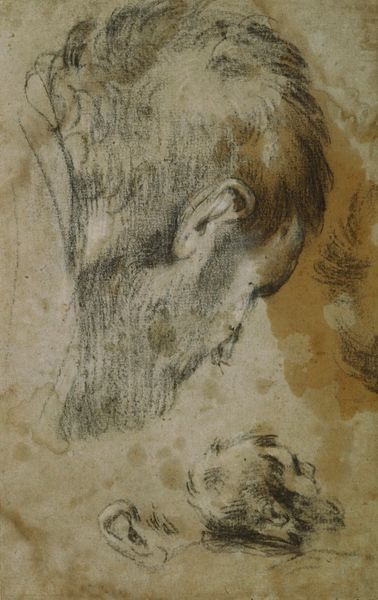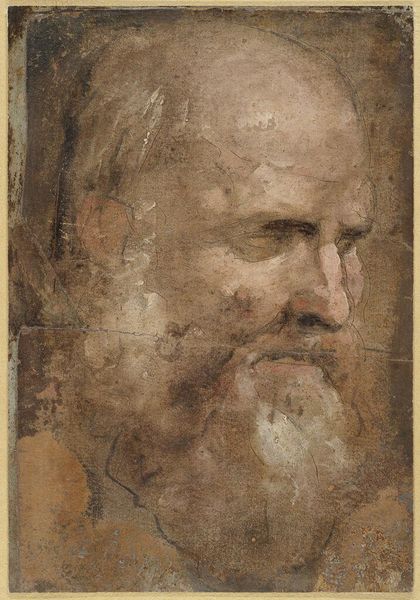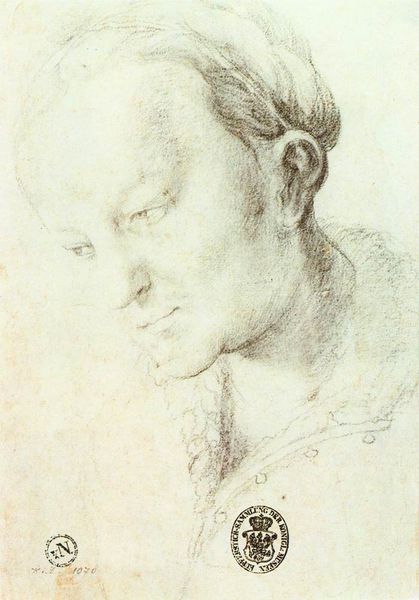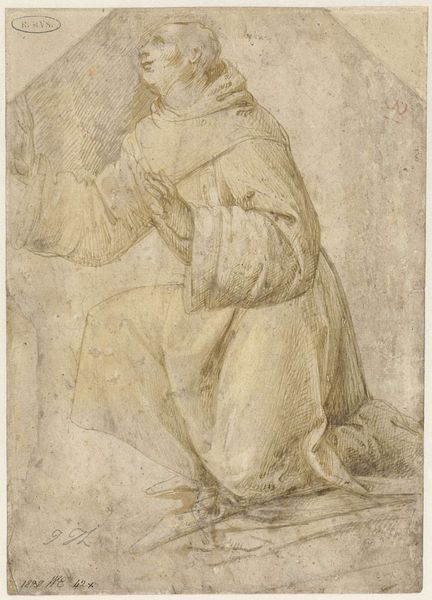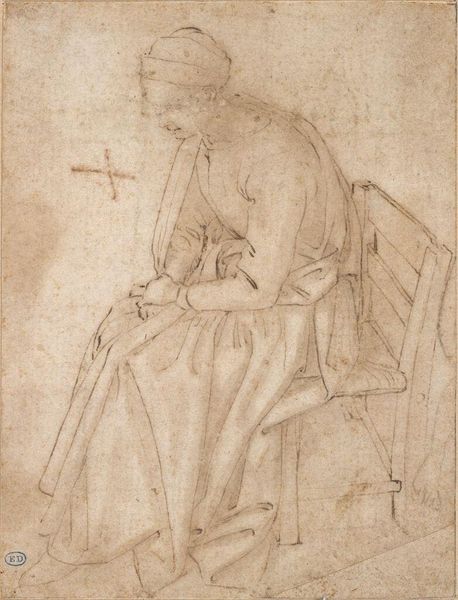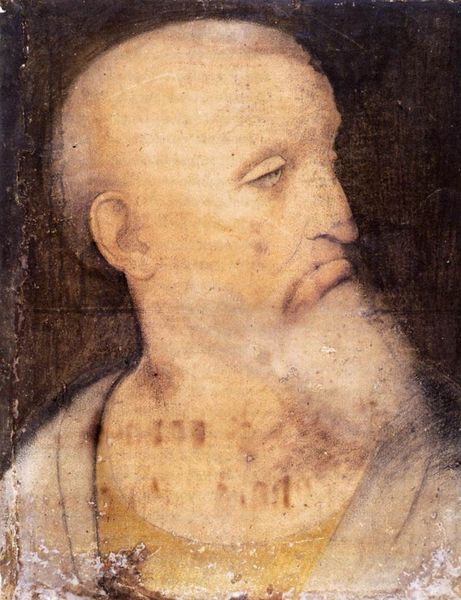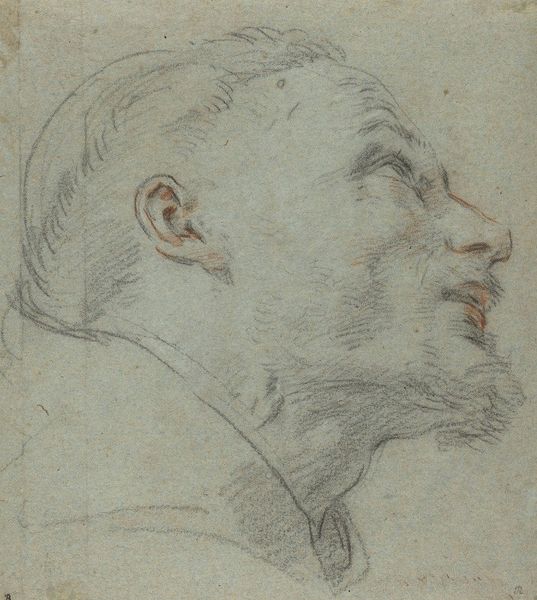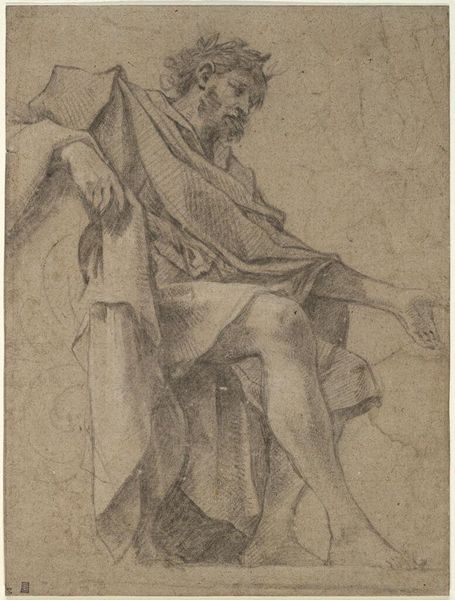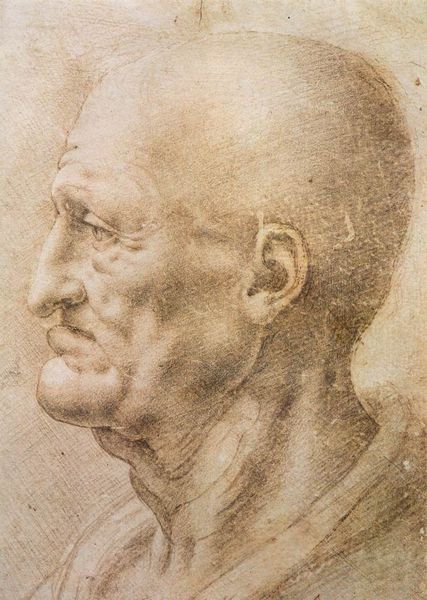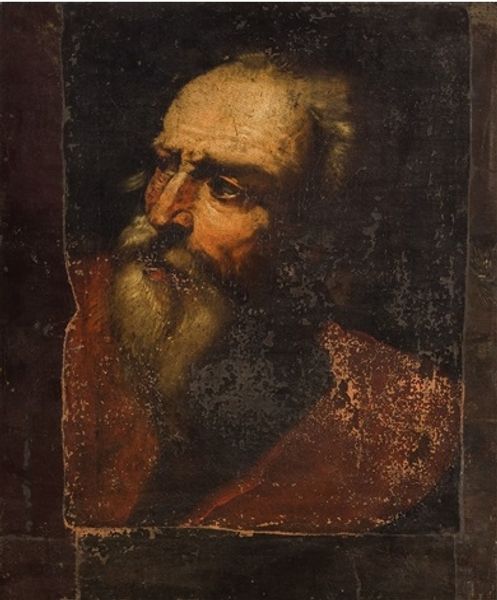
drawing, charcoal
#
portrait
#
drawing
#
charcoal drawing
#
11_renaissance
#
charcoal
#
italian-renaissance
Copyright: Public domain
Editor: This charcoal drawing, attributed to Leonardo da Vinci, is called "Head of St. Peter". It really gives the impression of age and deep contemplation. What stands out to you about this particular piece? Curator: What intrigues me is the overt display of the artist's labor. We see the charcoal, the very material substance, dragged across the surface, creating textures that simulate flesh and fabric. This process, the making itself, is paramount. Consider the economic forces at play—the accessibility of charcoal versus expensive pigments—and how it democratized art creation and collecting to an extent. Editor: So you’re saying the very accessibility of charcoal is a key point in understanding its significance? Curator: Precisely. And further, consider that charcoal allows for immediate corrections and alterations. The drawing isn't just a static image but a record of da Vinci’s process. We are essentially looking at artistic labor frozen in time. Think about who could afford art and what status meant during the Renaissance: artwork with expensive pigments versus drawings on paper... what do you think? Editor: It's fascinating to consider how the raw materials themselves speak to broader societal structures, about artistic freedom versus religious depictions... Curator: Indeed. The constraints – and freedoms – imposed by material conditions shape not just what we see, but how we see it. It prompts questions about the status of craft versus “high art”. Editor: That’s given me a completely new perspective. I was so focused on the subject that I overlooked the process, the materiality of its making! Curator: Excellent. Now, apply that to other artworks. Consider the societal impacts of the creation process; a good start on materialist reading of art.
Comments
No comments
Be the first to comment and join the conversation on the ultimate creative platform.

